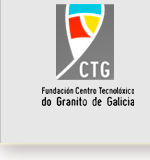 |
 |
A world of possibilities
06/05/2014
In the last years the Technological Centre of the Granite, studied by means of a project of investigation the adherencia between adhesive and commercial mortars with the natural stone, joined to different types of supports used frequently for facades. For the achievement of the aims proposed, carried out, in the laboratories of the Centre, an Experimental Plan of essays of unions hit in natural stone of granitic type. They effected more than 150 essays of samples of granite combined with other materials like brick or concrete. The variables considered in the experimental plan have been: utilisation of three types of adhesive; application of adhesive on two types of unions: stone-brick and stone-concrete; employment of two models of essay: flexion under load concentrated and flexo-traction. With the object to obtain representative values, have prepared 10 samples of essay by each typology. They have used tests of contrast or of reference of the models tested. In accordance with the exposed previously, formulate the following technical conclusions:
In relation to the results of cycles of humectación/dried, would be pertinent to realise proofs of thermal crash and frost resistance to the unions, to evaluate his behaviour in conditions of brusque changes of temperature or zones of frosts, respectively.
|
|
FCTGG © 2012 | Centro Tecnológico del Granito Ribeira, S/N, Torneiros. 36410 | O Porriño (Pontevedra)
  © Ideaspropias Publicidad
© Ideaspropias Publicidad
|


 986 348 964
986 348 964



